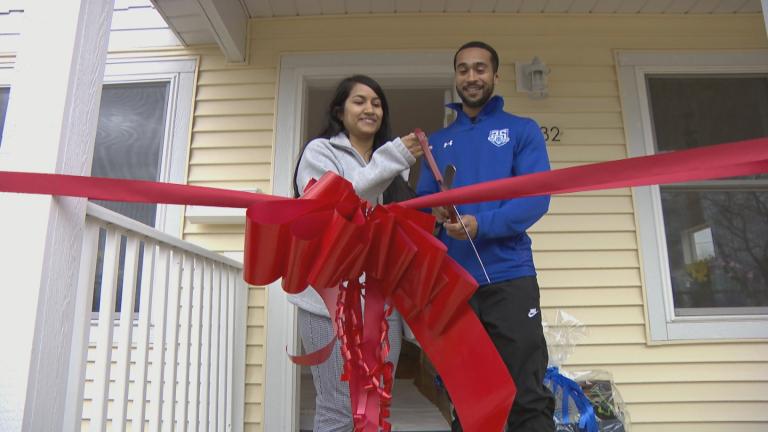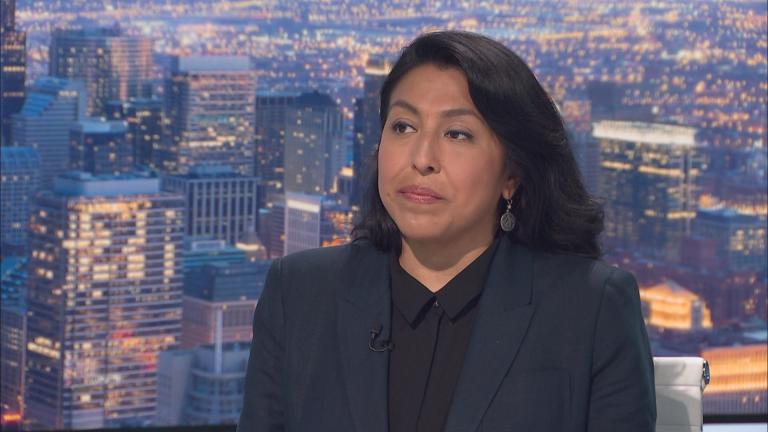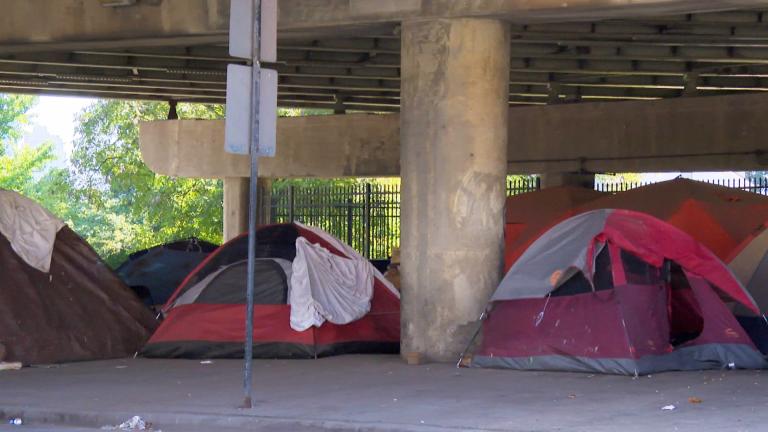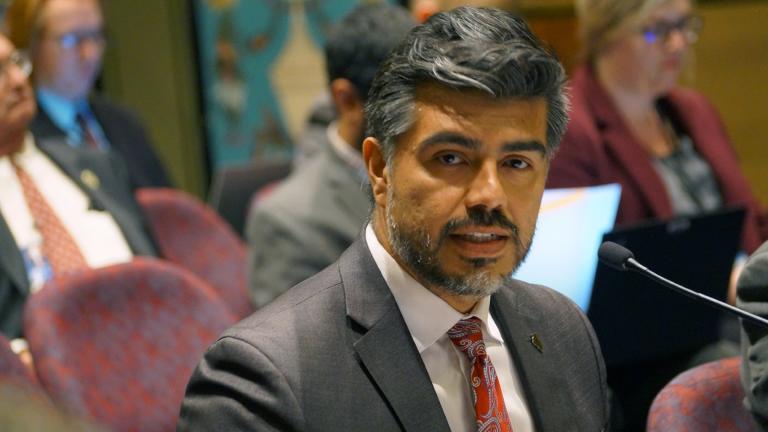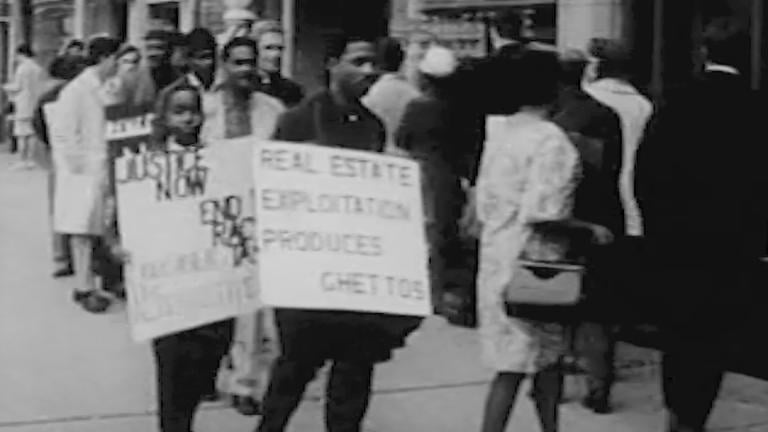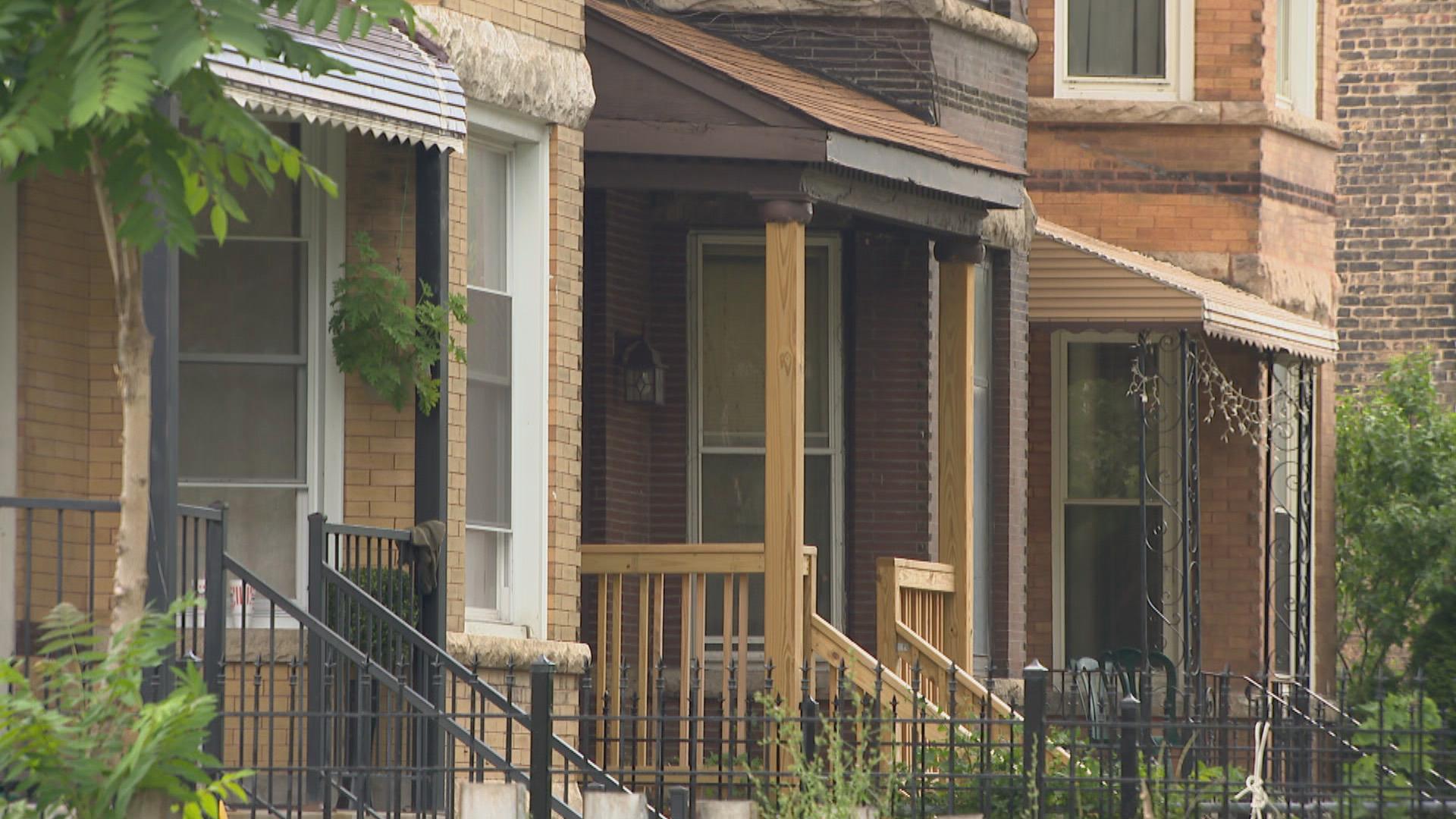 (WTTW News)
(WTTW News)
Mayor Lori Lightfoot is poised to unveil a plan designed to boost the number of affordable homes across Chicago at Wednesday’s City Council meeting that would require developers that get special permission from the city or a subsidy to build more units and pay higher fees.
The proposal comes after a Lightfoot-formed task force urged city officials in September to overhaul the city’s Affordable Requirements Ordinance approved 13 years ago to ensure it created homes and apartments that low- and moderate-income Black and Latino Chicagoans could afford.
The plan is designed to give developers incentives to build in parts of the city where there is little affordable housing or where longtime residents are vulnerable to displacement, Housing Commissioner Marisa Novara told WTTW News.
“Every area needs to contribute to the city’s need for affordable housing,” Novara said.
The city’s affordable housing ordinance will continue to apply to any development of 10 or more units that needs special approval by city officials, is on city-owned land or is subsidized by taxpayer funds. But developers will now have to set aside 20% for low- and moderate-income Chicagoans, up from the current requirement of 10% in most Chicago neighborhoods, according to the proposal.
The current ordinance focuses on individual projects, while the revised proposal targets areas of the city that need more affordable housing, said Daniel Kay Hertz, policy director for the Department of Housing.
The city’s Affordable Requirements Ordinance created just 1,049 homes in 13 years, which has barely dented the city’s affordable housing gap of nearly 120,000 homes, which has put “swaths of the city out of reach of low-income and working-class Chicagoans,” according to the task force’s report.
The 20-member task force determined that a more robust affordable housing ordinance could help stop the “massive exodus of Black Chicagoans from the South and West sides” and the displacement of Latino families from the Northwest Side.
Under the current ordinance, units considered affordable are designed for households earning approximately 60% of area median income. Those units are unaffordable for most Black and Latino Chicagoans, according to the task force report.
The median household income of Black Chicagoans is $27,713, while the median household income of Latino Chicagoans is $40,700, according to an analysis of American Community Survey data by the Metropolitan Planning Council for the task force. That means more than 6 in 10 Black Chicago households and more than 5 in 10 Latino Chicago households could not afford a rental unit set aside as affordable under the current law.
The task force’s top recommendation called for the city’s ordinance to be changed to require units be set aside for low- and moderate-income residents earning significantly less than 60% of the area’s median income, or $53,460 for a family of four, on average, according to the report.
“There is nothing magical about 60% of the area median income” in making an apartment affordable, Novara said. “We want to be able to expand options.”
To achieve that goal, developers would be required to set aside one-third of the affordable units for households earning no more than 50% of the area’s median income, or $44,550 for a family of four, according to the proposal. One-sixth of the units must be affordable to households that earn no more than 40% of the area’s median income, according to the proposal.
Developers who agree to set aside more units for households earning no more than 40% of the area’s median income only have to set aside 13% of their new units as affordable, while those who agree to set aside more units for earning no more than 40% of the area’s median income only have to set aside 10% of their units as affordable, according to the proposal.
Other incentives will encourage developers to build family size units by allowing those who build three- and four-bedroom units to build fewer units, another major recommendation of the task force to build larger units.
Less than 5% of the units created by the Affordable Requirements Ordinance since 2007 included three bedrooms, making them unsuitable for most Black families, which have an average of 2.7 members, as well as most Latino families, which have an average of 3.7 members, according to the task force report.
Projects near bus and rail lines that trigger the ordinance would also be encouraged to eliminate parking spaces.
At least a quarter of the required affordable units must be built as part of the larger development, while another quarter could be built off site in any part of the city, except for developments in areas in which the city determines longtime residents are at risk of being displaced from their homes, according to the proposal.
Developers would still be allowed to opt out of building new affordable units by paying a fee under the revised proposal, but those fees would rise significantly for projects that are in Chicago’s wealthiest neighborhoods, like downtown, from $175,000 to approximately $375,000, according to the proposal.
However, the revised proposal would do nothing to end the unwritten rule of aldermanic prerogative, which has been used by aldermen from primarily white wards to block affordable housing from being built and has fueled segregation in Chicago.
“Those are conversations we need to have as a city,” Novara said.
While Lightfoot has vowed to prevent aldermen from exercising that power to block affordable housing, she has yet to take action.
During the 2019 mayoral campaign, Lightfoot supported an Affordable Housing Equity Ordinance, which would have required any proposal including affordable units to “automatically go through a streamlined process for approval” if they are planned in wards where less than 10% of housing stock is affordable.
The proposal set to be introduced Wednesday makes no change to the approval process for developments that include affordable housing in any area of the city.
In addition, Lightfoot’s proposal does not align with the Development for All Ordinance, which is supported by affordable housing advocates but has been languishing in legislative purgatory. That measure would require developers to set aside 10% of units as affordable for new developments in “low-rent neighborhoods,” 20% in “moderate-rent neighborhoods” and 30% in wealthy and gentrifying neighborhoods.
The mayor’s proposal is also less stringent than a proposal made by progressive aldermen after the task force released its report.
That proposal would require 25% of affordable units to be affordable for those earning 20% of the area median income, which those who are disabled rely on payments from Social Security could afford, and another 25% set aside for those earning 40% of the area median income, which would be affordable for most Black families. The remaining 50% would be earmarked for those earning 50% of the area median income, which would be affordable for most Latino families, according to the proposal endorsed by 11 aldermen.
Contact Heather Cherone: @HeatherCherone | (773) 569-1863 | [email protected]

